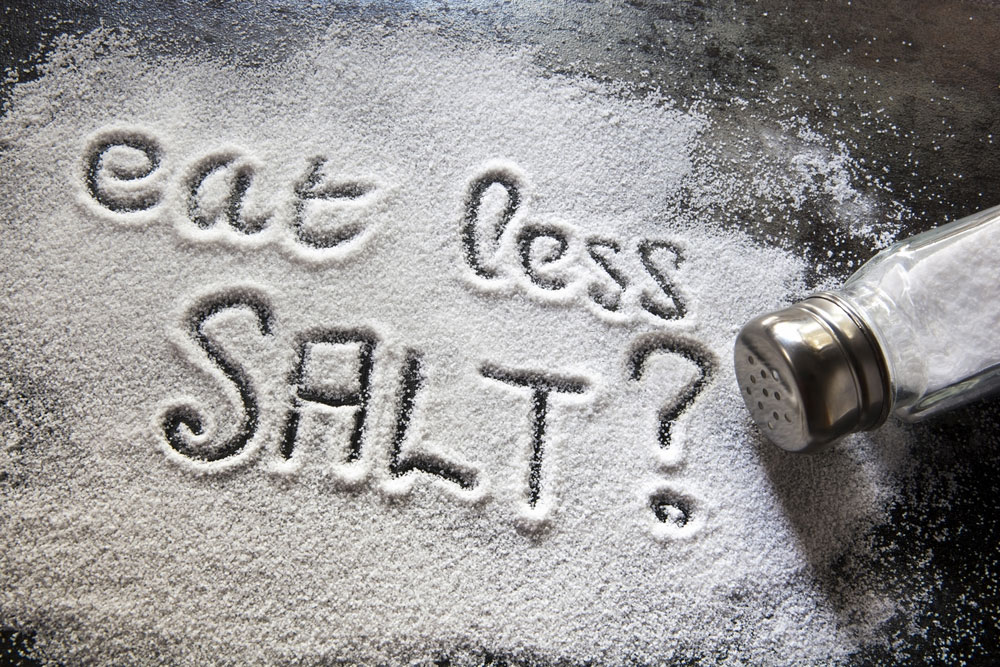
Scientists have discovered that overweight teenagers who eat too much salt have shorter telomeres, the ends of the chromosome which protect the cells from harm
Eating too much salt may speed up the ageing process, scientists have discovered for the first time.
Although sodium is known to raise the blood pressure, which can lead to fatal heart attacks and strokes, it is the first time it has been linked to cellular ageing.
Scientists found that overweight or obese teenagers who had a high salt diet had shorter ‘telomeres’ – the protective caps at the end of chromosomes – compared with those who ate a low salt diet. Telomeres have been compared with the plastic tips that stop shoe laces fraying.
Each time a cell divides the telomeres get shorter and when they get too short the cell stops dividing and dies.
The same genetic process has been linked to conditions associated with old age such as heart disease, cancer, type-2 diabetes and dementia. High levels of body fat were already known to hasten the shortening of telomeres.
But the new study found that sodium in salt seems to work hand-in-hand with obesity to speed the effect up still further.
Lead scientist Dr Haidong Zhu, from Georgia Regents University in Augusta, US, said: “Even in these young people, we can already see the effect of high sodium intake, suggesting that high sodium intake and obesity may act synergistically to accelerate cellular ageing.
“Lowering sodium intake, especially if you are overweight or obese, may slow down the cellular ageing process that plays an important role in the development of heart disease.
“The majority of sodium in the diet comes from processed foods, so parents can help by cooking fresh meals more often and by offering fresh fruit rather than potato chips for a snack.”
Dr Zhu’s team divided 766 teenagers aged 14 to 18 into different groups according to their reported sodium intake.
Low-intake teens consumed an average of around 5g of salt a day, compared with more than 10g grams for the high-intake group. In Britain the recommended intake is 6g. A recent study showed the majority of teenagers exceed their daily limit, mainly through eating bread and cereal.
Researchers found that overweight or obese teenagers who at the most salt had significantly shorter telomeres than those who ate the least. But high sodium intake did not have a significant effect on telomere shortening in normal-weight teens.
Although the salt link was only found in obese people it is the first time that salt has been shown to affect cellular ageing.
The research, presented at an American Heart Association meeting in San Francisco, suggests a possible link with inflammation, said the scientists. Inflammation is known to hasten telomere shortening and is linked to obesity. It also increases a person’s sensitivity to salt.
Katherine Jenner, Campaign Director at Consensus Action on Salt and Health said: “Lowering your salt intake is essential to lower your risk of not just heart disease, but also stroke, heart attack and chronic kidney disease.
“As you might expect, teenagers often have a high salt diet, but it’s not just pizza, crisps and chips that are the culprits, every day foods such as breads, breakfast cereals and sauces can be surprisingly high in salt.” Nutritionist Sonia Pombo added: “Children are eating a worryingly high amount of salt.
“Dietary habits in childhood and adolescence are likely to influence eating patterns in later life.
“Liking salt and salty foods is a learned taste preference and the recommendation that the adult population reduce their sodium intake will be more successful if children do not develop a preference for salt in the first place.”
Source: telegraph




